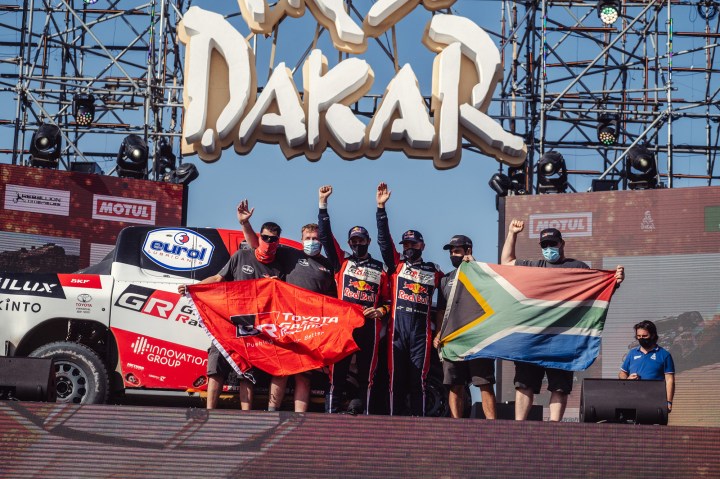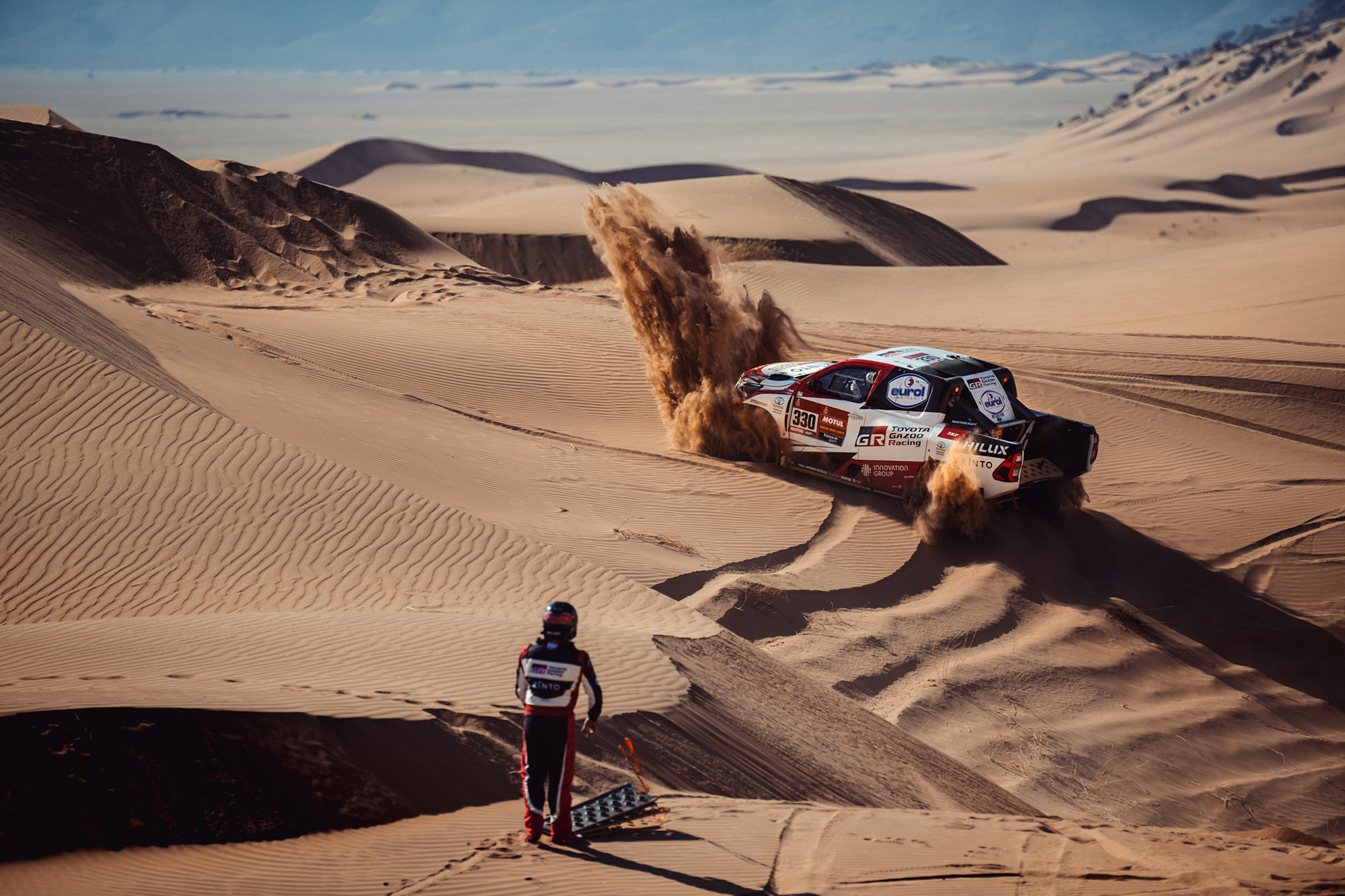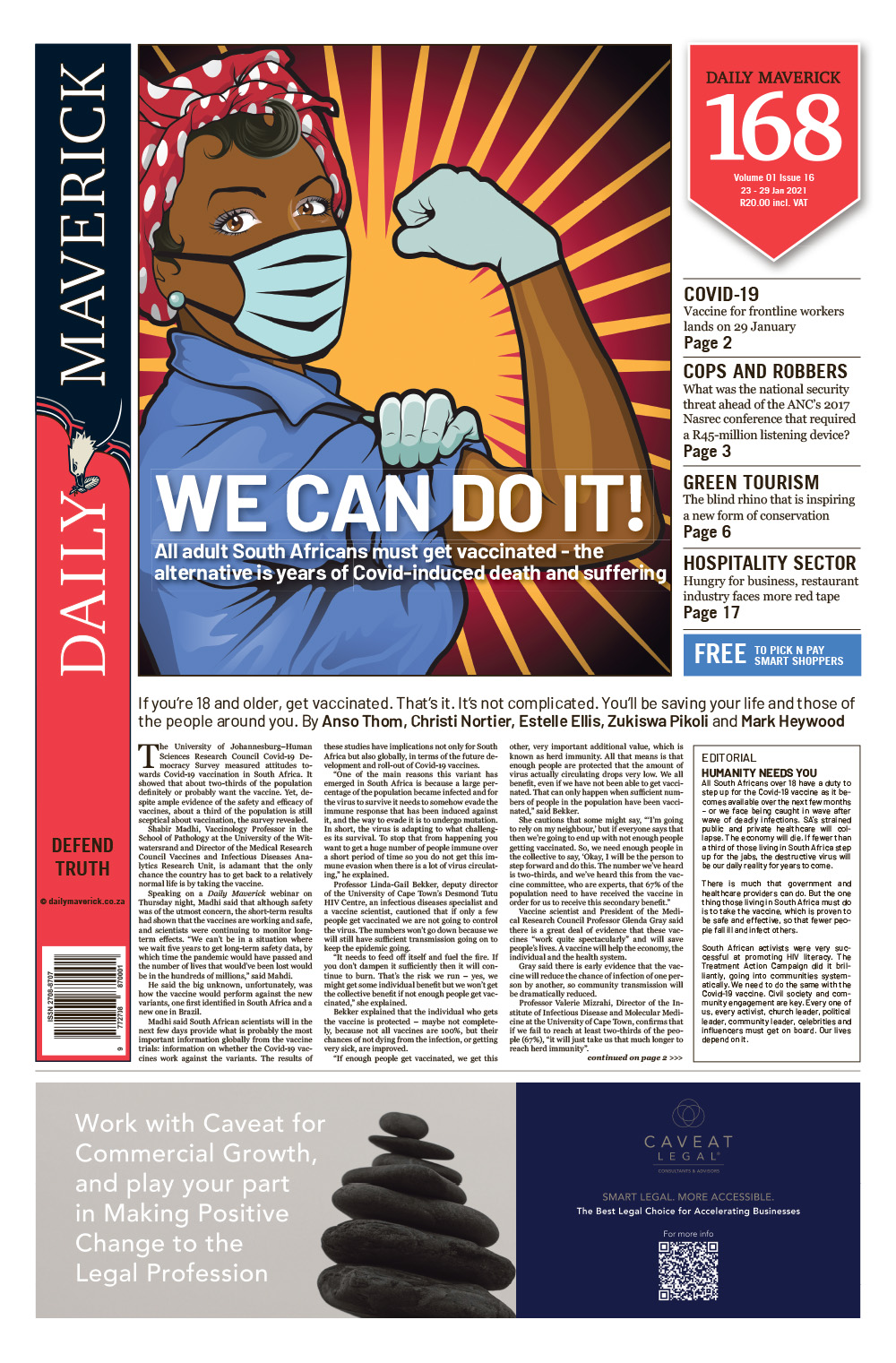MAVERICK SPORT 168
Dakar Rally remains iconic despite its nomadic existence

Saudi Arabia may not offer as varied a landscape as the sweeping mountains, forests and deserts of South America, but racing in its deserts does not come tougher.
First published in the Daily Maverick 168 weekly newspaper.
When it comes to sport, certain events tend to have magic in their names. The Masters, The Ashes, El Classico and The Open. In motorsport, we have the Indy 500, Le Mans and, of course, the Dakar – the increasingly inaccurately named 12-stage (usually) motor-racing saga that sees drivers and riders rip across desert landscapes at insane speeds, navigating their way to a finish line thousands of kilometres away.
The race, initially known as the Paris-Dakar, has been run every year for more than four decades, with the exception of 2008, when terrorist activity in North Africa forced the Amaury Sports Organisation (ASO), which organises the mammoth rally, to cancel it just days before the start.
It was a devastating blow, which led to the race shifting continents to South America, because the ASO clearly wasn’t interested in gun-toting rebels messing with its race.
And so, a new era dawned, with South Africa’s Giniel de Villiers winning the first South American edition for Volkswagen in 2009. Since then, people have continually questioned why the race retained the Dakar name, but the ASO felt that it had become a brand rather than a destination.
For the next 10 years, the race crisscrossed the Atacama Desert and the Andes mountain range, and visited Argentina, Chile, Bolivia, Peru and Paraguay. It may not have been Africa, but South America certainly delivered when it came to varied terrain, iconic landscapes and adventure. Until the host countries ran out of money.

(Photo: MCH Photography)
A new sandpit for the Dakar
The ASO’s business model is an interesting one, with nations having to spend heavily to host the race. This is supposedly offset by the income generated by the thousands of team members and supporters who visit the host countries during the rally, with ripples running through to the tourist industry for months or years after each event.
But South America is not a wealthy continent and, after 10 years, the ASO had to find a new sandpit to play in. Sand? Money? It was obvious, wasn’t it? Saudi Arabia.
The ponytails at the ASO called the move to Saudi a “third chapter” of the Dakar Rally, since it was the third continent to host the race. Initial reactions to the move were mixed – everything from politics to a monotonous landscape were discussed, but when the flag dropped for the start of Dakar 2020, the talk stopped, and the racing took over. And Saudi Arabia proved to be a worthy host for the world’s toughest automotive event.
The new challenge – Covid-19
But then came Covid-19, and the biggest challenge the race has ever faced. Globally, major sporting events were being cancelled or postponed, but the ASO is a French company. The French are a determined nation, and find a way to do as they please, pandemics be damned. The ASO also organises the Tour de France, and it owns a 50% stake in Le Mans, and both those events powered through the pandemic successfully.
A race bubble was put in place for the 2021 edition, with Covid-19 tests, self-isolation prior to the race, and more tests before the entire circus could congregate in Jeddah for the start. Masks were mandatory, physical distancing was enforced, meals were pre-packaged, and TV interviews were limited, with mics on boom poles a new craze in the bivouac. It was the Dakar, but it was different.
But then, the Saudi version of the race would always be different. In South America, the race had one million fans line the roads as the Dakar convoy traipsed by.
Spectator points were a sea of people, crammed in tight and craning their necks just to catch a glimpse of their heroes in full flight. They sang the names of Nasser Al-Attiyah, Robby Gordon and Stéphane Peterhansel, swigging beers and having a braai on the side of the road. In Saudi, not so much.
In 2020 there were zero spectators, and 2021 saw only a marginal increase. But that hardly matters, because the Dakar is essentially a made-for-TV event. Broadcasting rights for the race are expensive, but the footage is astounding – even from Saudi Arabia, which offers a monotonous backdrop compared to the sweeping mountains, forests and deserts of South America.
This year’s race largely skirted the Empty Quarter, which offers nothing but sand. Instead, it spent two days in the eye-catching canyons of the area around Al Ula and Neom, which, while equally monochromatic, at least offered shapes other than dunes and sandy tracks.
Ask the race crews, however, and they’ve got a mass of respect for the Saudi Arabian version of the race. Some even felt that it was too rough in places, too hard on the cars, bikes and the bodies of the crews. But as Toyota Gazoo Racing SA team principal Glyn Hall likes to say: “Put on your big-boy panties and let’s go racing.”
The Dakar isn’t meant to be easy.

(Photo: MCH Photography)
The 2021 race
Hall’s team consisted of four South African-built and developed Toyota Hilux racing cars. With Qatari superstar Al-Attiyah heading the attack, and De Villiers in place as backup, the team also fielded a promising rookie in the form of double South African cross-country champion Henk Lategan, as well as a gentleman racer with serious pace in the form of Shameer Variawa.
The four-wheel-drive Hilux races to a different set of rules to those imposed on the two-wheel-drive buggies, such as the race-winning Mini, which looks nothing at all like a Mini. Sadly, the deck was always stacked against the Toyotas, and as valiant as Al-Attiyah’s fight was, the best he could muster was second place. No shame in that, but at this level nobody enters the race to finish second. As Ricky Bobby famously put it: “If you ain’t first, you’re last.”
Lategan showed serious pace on stages three and four, mixing it up with the likes of Carlos Sainz and Peterhansel, before going end-over after striking a ditch in stage five.
The car was not badly damaged, but Lategan’s shoulder popped out of its socket in the crash, and it was game over for the youngster (at 27, one of the youngest in the field).
Other southern Africans also tackled this year’s race, including Brian Baragwanath and navigator Taye Perry, who fielded a South African-built Century CR-6 buggy. They had amazing pace at times, and Perry proved her worth as a navigator in tricky conditions, the former biker finding some tough waypoints that floored more experienced crews. But a barrel roll on stage six clamped the brakes on their progress, and they finished 32nd overall.

(Photo: MCH Photography)
And, on the bikes …
On the bikes, Ross Branch was in his first outing as a works rider for Yamaha. The Botswana rider was right at the sharp end of the action, in contention for victory, when a heavy crash in stage seven pushed him down the order, and mechanical issues signalled the end of his race in stage nine.
And then there was James Alexander, also from Botswana, who took part in his first Dakar this year. The 50-year-old biker finished 63rd overall, and rode closer to the tail end of the field. But the Kalahari madala (elder) loved every second of it, including the fatigue and the pain. Because the Dakar tends to offset those feelings by offering a great adventure to those who seek it, and the sternest of challenges to those who vie for victory.
Dakar 2021 saw Peterhansel win his 14th Dakar Rally, his eighth in a car. Kevin Benavides emerged victorious in the bike category, while the Russian Kamaz crews dominated in the truck category.
But those are just the results. Dakar 2021 also saw humanity prevail in the face of a pandemic; it saw anguish and joy and frustration. It saw all of that and many more emotions that form the rich tapestry of the Dakar story, which is set to continue in 2022 – with or without a pandemic. DM168
This story first appeared in our weekly Daily Maverick 168 newspaper which is available for free to Pick n Pay Smart Shoppers at these Pick n Pay stores.

"Information pertaining to Covid-19, vaccines, how to control the spread of the virus and potential treatments is ever-changing. Under the South African Disaster Management Act Regulation 11(5)(c) it is prohibited to publish information through any medium with the intention to deceive people on government measures to address COVID-19. We are therefore disabling the comment section on this article in order to protect both the commenting member and ourselves from potential liability. Should you have additional information that you think we should know, please email [email protected]"





 Become an Insider
Become an Insider
Much as I love the Dakar, sadly it also again claimed a fatality in French bike rider Pierre Cherpin who died of injuries sustained in a heavy fall. IMHO, a paragraph mentioning this and honouring his legacy is missing in this piece!